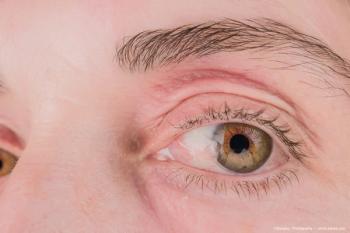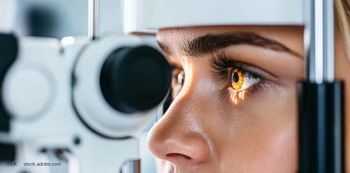
Pearls for efficient femtosecond laser cataract surgery in busy practice
The introduction of a femtosecond laser for cataract surgery into a practice can bring the concern for the potental loss of efficiency. A Louisville surgeon provides some solid advice and shares some strategies to make this new technology as efficient as possible.
Take-home message: The introduction of a femtosecond laser for cataract surgery into a practice can bring the concern for the potental loss of efficiency. A Louisville surgeon provides some solid advice and shares some strategies to make this new technology as efficient as possible.
By Asim R. Piracha, MD; Special to Ophthalmology Times
Louisville, KY :: When my practice acquired a femtosecond laser for cataract surgery, the potential loss of efficiency was a huge concern.
However, it didn’t take us long to become comfortable using the femtosecond laser. Today, our femtosecond laser-assisted cataract surgery (FLACS) conversion rate is about 50%, and we are happy with the procedure speed, clinical outcomes, and revenue impact.
My average total vacuum time, including imaging, treatment, and removing the interface, is just 1.5 minutes. I would like to share some of the strategies I have developed to make FLACS as efficient as possible.
Docking
Our practice uses the Catalys Precision Laser System (Abbott Medical Optics). To me, the most important step in a FLACS procedure is the initial head positioning and docking of the laser’s liquid optics interface. If that is done well, everything else flows smoothly.
Preoperatively, I mark the limbus at the 3 and 9 o’clock positions. In the laser room, I line up those limbal marks with the reticles on the interface.
This better aligns the pre-programmed astigmatic keratotomy marks on the correct axis to eliminate this extra step during laser programming to adjust them.
To dock, the laser interface is centered over the limbus, with equal sclera visible inferiorly and superiorly, and ensure the patient’s iris plane is parallel to the floor. This helps eliminate tilt, provides better optical coherence tomography (OCT) imaging, and allows me to use my preferred capsulotomy method, scanned capsule centration.
If the patient has trouble lying still, I hold the head during the OCT scanning., and rely on my technician to operate the laser. Otherwise, I operate the laser myself, which is more efficient and stress-free.
Capsulotomy
Figure 1: Asim R. Piracha, MD, prefers a 5.1-mm laser capsulotomy using the "scanned capsule" setting for the contraption on the visual axis and good overlap of the IOL. (Photos courtesy of Asim R. Piracha, MD)My preferred capsulotomy size has evolved with my experience with the laser (Figure 1). I find that a 5.1-mm capsulotomy is the perfect size to fully overlap the IOL without causing capsular phimosis.
I prefer scanned capsule centration for better IOL centration on the visual axis, but if either the axial or sagittal OCT images are tilted, I switch to pupil centration for better results. If the pupil is <5.4 mm (which gives a 4.4-mm capsulotomy), I turn the laser’s capsulotomy function off and insert iris hooks or a Malyugin ring in the operating room and perform a manual capsulotomy.
Attempting to go back and forth between the laser room and the operating room to insert a ring or hooks before the laser capsulotomy is stressful to the patient and increases the risk for potential errors during the laser treatment.
With the Catalys laser, it is possible to safely perform a manual capsulotomy after lens fragmentation in small-pupil eyes. This laser produces a low amount of energy, so the amount of air bubbles and fluid in the eye is low to start.
In smaller-diameter eyes, the fragmentation diameter is also smaller, so there is even less energy applied and less risk of posterior capsular rupture during the laser treatment, particularly with a one-pass technique.
Lens fragmentation
In all but the densest lenses, I use a one-pass technique, selecting the “quadrants complete” pattern (Figure 2), which still allows for easy nucleus disassembly and reduces the time and energy by 35% compared to the multiple pass and “waffle pattern.”
Figure 2: With the "quadrants complete" during the femtosecond laser-assisted procedure, phacoemulsification fragmentation pattern allows for nuclear disassembly and reduces the femtosecond laser time and energy by 35% compared to the multiple pass and "waffle pattern."By reducing the laser energy with this pattern, the surgeon is better able to visualize the fluid wave during hydrodissection; there is less air and fluid production; the chamber is deeper; and the patient has better fixation on the microscope lights. This also helps beginning surgeons experience a more “normal” red reflex during phaco.
I adjust the fragmentation grid sizing according to nuclear density, with an 800-µm grid for a 1+ nucleus; 600-µm for a 2+, and 500-µm for 3+. This approach is time saving and improves my ability to chop the lens into quadrants and easily emulsify each pre-softened quadrant–reducing th average effective phaco time (EPT) by 50% and producing clear corneas on postoperative day 1.
Astigmatic incisions
Another advantage of FLACS is ability to create nonpenetrating intrastromal astigmatic keratotomy (ISAK) incisions to correct up to 2.00 D of astigmatism.
I still use the Donnenfeld Nomogram, but I do not reduce the treatment by 20% like I do with penetrating AKs. ISAK incisions have less effect than penetrating incisions but are more controlled and patients experience less foreign body sensation.
From an efficiency perspective, ISAK can be performed in about 60% less time than penetrating-laser AK incisions. They also reduce the need for laser vision correction enhancement because there is little risk of overcorrection and they are titratable in the event of undercorrection.
If there is residual astigmatism one month after surgery, I simply open the incisions with a diamond blade at the slit lamp.
Hydrodissection/phaco
In the operating room, I inject an ophthalmic viscoelastic device (OVD) on top of the anterior capsule rather than on the edge so the OVD doesn’t push the capsule to the side, and into the angle. I use less OVD than in a manual case, filling just enough to maintain space.
By not overinflating, a more aggressive cortical-cleaving hydrodissection is performed without worrying about capsule rupture or iris prolapse. This makes the procedure efficient, reducing or eliminating the need for irrigation/aspiration (I/A) in many cases.
After a laser capsulotomy, the surgeon sees two visible rings: one is the clean, clear edge of the capsulotomy; the other is a white ring of temporarily opacified cortex posterior to the capsulotomy edge.
The two rings usually are aligned but can shift during hydrodissection. The beginning FLACS surgeon must learn to distinguish between these two rings so as not to inadvertently tear the capsule during phaco by not correctly identifying the edge of the anterior capsule.
In a soft cataract, I use my chopper and phaco handpiece with no ultrasound power to chop the softened lens into several pieces. The lens should separate nicely along the vertical fragmentation channels.
With a denser cataract, I emulsify and debulk the central portion of the lens using ultrasound, and then manually chop the lens into quadrants. In a very dense cataract, I will groove deeper and then perfrom a “stop-and-chop” technique.
At any density, chopping and emulsification is easier thanks to the laser fragmentation.
Following true cortical-cleaving hydrodissection, I really don’t need to do much I/A. Cortex removal is the one step that can be a little slower with the laser.
I use a 45Ë-angled I/A tip to first remove subincisional cortex and then go around 360Ë to remove the rest of the cortex.
I don’t like to use the I/A tip to polish the capsule because it can damage the capsule if it isn’t perfectly smooth. Instead, I use a silicone capsule polisher attached to the BSS cannula to “powerwash” the capsule. This loosens the cortex before I/A and removes any residual lens epithelial cells (LECs) afterwards to leave the posterior capsule pristine.
'Frosted-glass' look
Compared to a manual technique, I find that with a FLACS procedure, there are more LECs, giving the anterior capsule a “frosted- glass” appearance. To reduce anterior capsular phimosis, especially with any premium IOL, I polish the undersurface of the anterior capsule. This helps ensure good centration of the IOL long term.
I felt strongly that FLACS presents my practice with an opportunity to do better, safer surgery that delivers the refractive results and spectacle independence that patients want.
Financial and efficiency concerns are real, but ophthalmologists should rest assured that there are good strategies to make FLACS more efficient in their practices and will improve their clinical outcomes.
Asim R. Piracha, MD
P: 502-895-2910
Dr, Piracha is medical director of John-Kenyon American EYE Institute, Louisville, KY, and associate professor at the University of Louisville's Department of Opthhalmology and Visual Sciences, He has received speakng fees from Abbot Medical Optics.
Newsletter
Don’t miss out—get Ophthalmology Times updates on the latest clinical advancements and expert interviews, straight to your inbox.













































.png)


